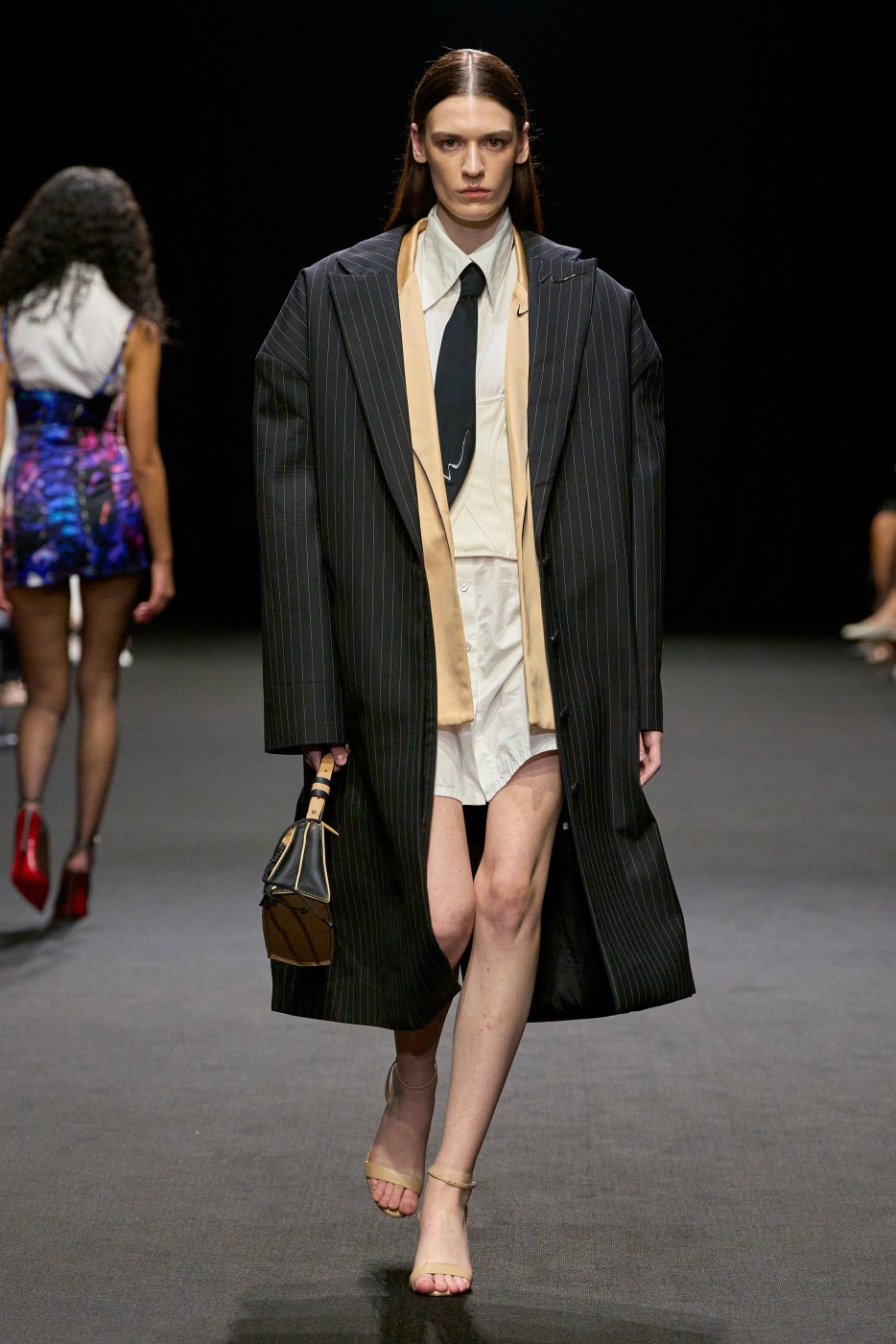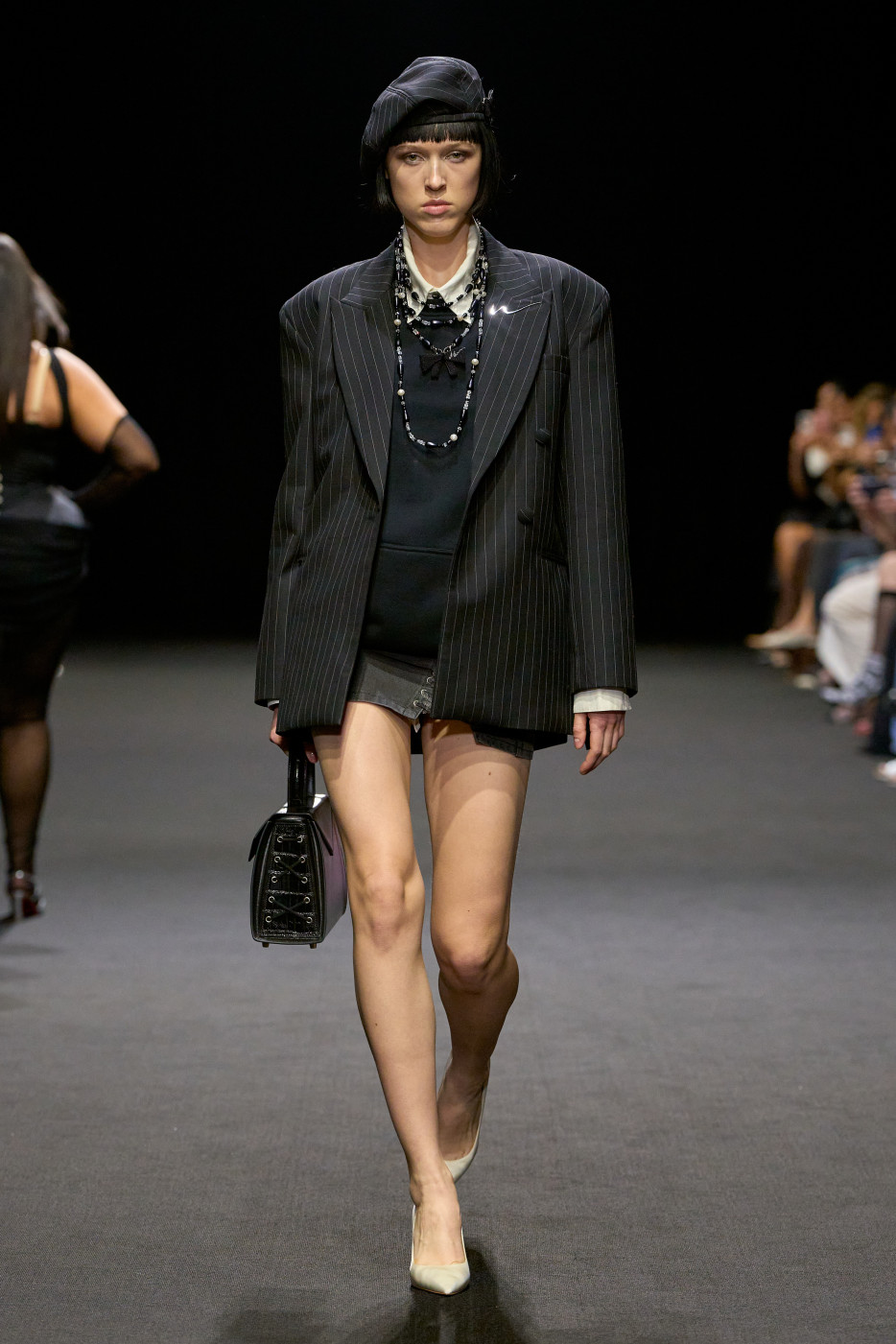
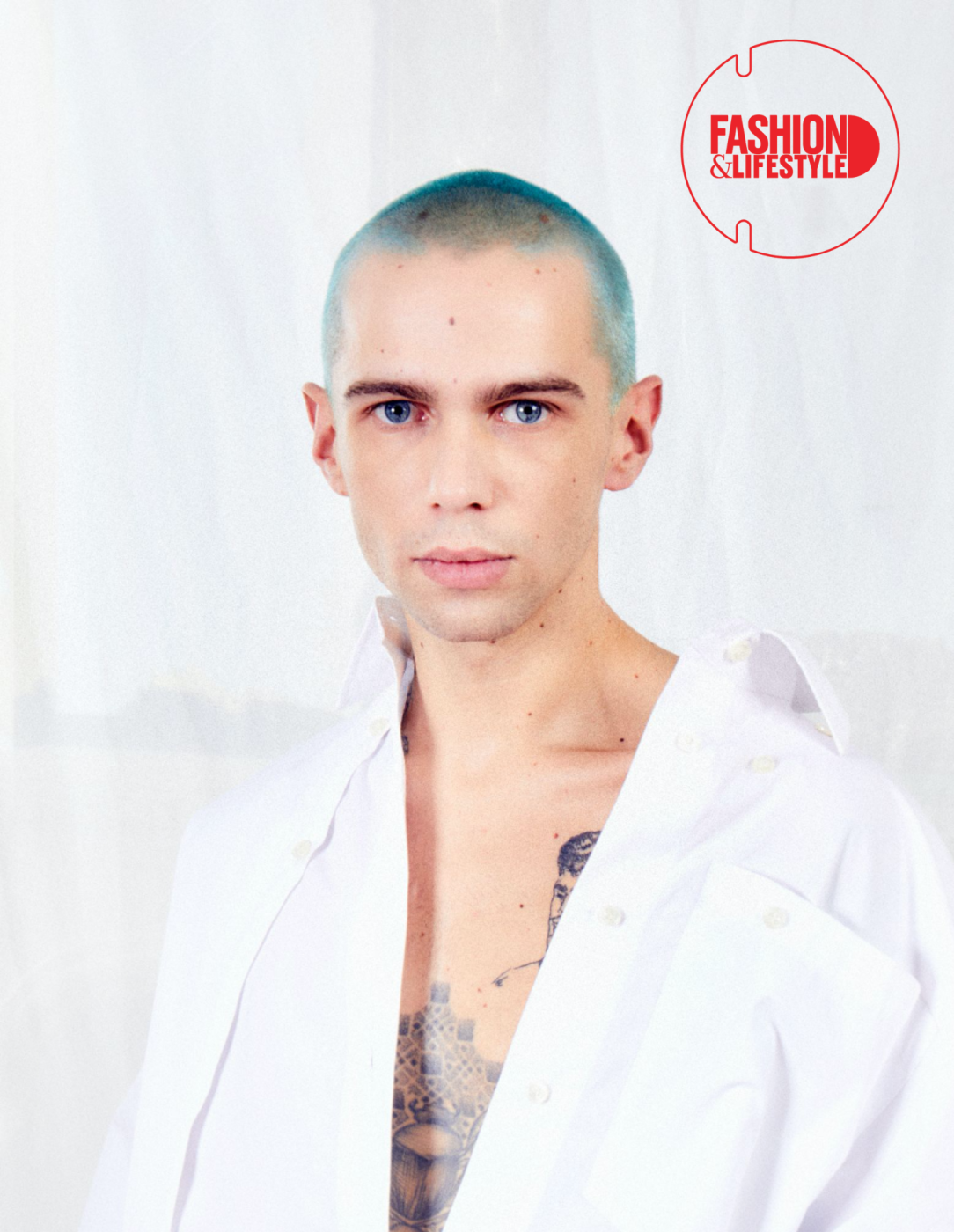
From Paris to Dubai with Love: Victor Weinsanto
One of the most promising emerging designers of Paris Fashion Week, French designer Victor Weinsanto, has also become a regular at Dubai Fashion Week, where he will unveil his new collection on 6 September, just weeks before showing it in the French capital. We met Victor in his cosy Paris studio overlooking Sacré-Coeur and the rooftops of the city, where he opened up about how he fell in love with fashion, how he adapts his joyful and theatrical designs — à la Jean Paul Gaultier, his maître, icon and favourite teacher — to different audiences, and why it matters that fashion weeks around the world welcome international voices.
How did you fall in love with fashion?
It’s a long story. It all started with dancing. I wanted to become a professional ballet dancer. As a teenager, I was training in Stuttgart, dancing from four to eight hours a day, on top of regular school classes and extra German lessons. Honestly, by the time I got back to the boarding school in the evenings, all I wanted was to clear my head. While everyone else was watching dance clips, I found myself watching fashion shows instead. That became my passion. I loved the extravagance, and I also saw a strong connection with dance and theatre. In the end, it was actually a friend of mine, Taicia, who had the courage to tell my parents that I wanted to quit dance and pursue fashion, something I didn’t dare say myself because they had invested so much time, energy, and money in my dance career. But my parents were very understanding. They supported me right away, with one condition: that I would work hard and contribute financially to this new path. That’s how it happened. It wasn’t a linear plan; it was more a series of circumstances. I just said, “I’m going to do fashion,” even though I couldn’t draw or sew at the time. I had to learn everything later, from scratch.
So how did you learn? Did you go to a fashion school?
My dream was to go to Parsons, where you could spend one year in Paris, another in Milan or New York. I loved that idea of travelling. But when I mentioned it to my parents, they were like, “And where exactly is the money for that going to come from? Cute!” In the end, I chose one of the more affordable options in Paris, which is how I ended up at Atelier Chardon Savard. Honestly, it suited me perfectly. I was thrilled just to be in Paris, it’s the main fashion capital, whatever anyone says. At the time, I was already dreaming of working for Jean Paul Gaultier, so for me it was essential to be in the city where his boutiques were, surrounded by all the designers who inspired me. After that, I did several internships at Y/Project, Maxime Simoëns, See by Chloé, and finally landed my dream job at Jean Paul Gaultier.
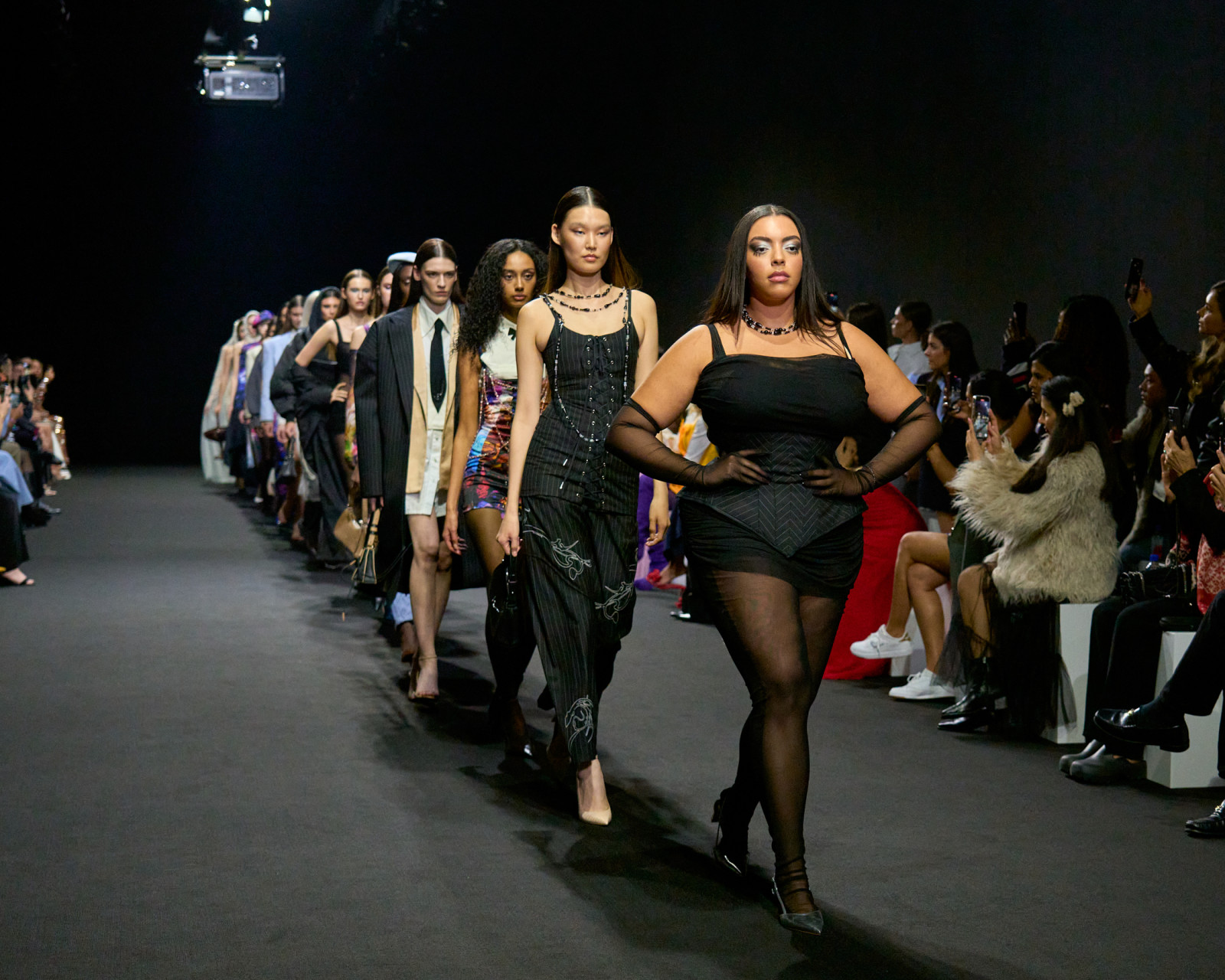
How did you meet your icon, Jean-Paul Gaultier?
The very first time was actually thanks to Pierre and Gilles, the artist-photographers and dear friends of mine. I had already done several shoots with them, and when Jean Paul asked them to create a portrait of two young men, they thought of me. The image was meant to represent Jean-Paul in his youth alongside his best friend, Francis Menuge, who always believed in him and inspired him to pursue his fashion dream, but who sadly passed away in 1990, when he was just 40 years old. It was about telling the story of their meeting and their friendship. Out of kindness, they put my name forward. Jean-Paul accepted me without even knowing who I was or that I was actually interning in the costume department for his Fashion Freak Show, which was running in Paris at the time. During the fittings, I dared to mention to Tanel Bedrossiantz, Jean-Paul’s muse, friend and right hand, that I was a stylist and dreamed of working for Monsieur and that it would mean the world to join the house. To be honest, I had already left my CV at reception countless times without success. But this time, it worked: I got an interview with Isabelle Aout, who was head of the studio then. We had an incredible connection, and I still adore her to this day. Thanks to that meeting, I finally joined Jean-Paul’s team.
How does it feel to work alongside your icon?
Working with Gaulthier was truly magical. I was always in awe: he was my idol, and suddenly I found myself by his side, assisting a genius who was not only immensely creative but also unbelievably kind and generous. Over time, of course, the initial awe settled, and I was able to focus more on my role as assistant stylist, seeing him as my boss rather than just the star I worshipped. But those early moments with him were pure magic.
What was the best lesson you learned from Jean-Paul Gaultier?
What struck me most was really the love of savoir-faire. Whether it was embroidery, pleating, the handling of different fabrics, the draping of silk, or bias cutting… all of these elements have stayed with me and are central to my work today. Honestly, without those experiences at Jean Paul Gaultier, my level of craftsmanship simply wouldn’t be the same. That’s where I learned to love haute couture, to love the process of creating bespoke pieces with all their technical complexities: the fabrics, the weight, the scale. It’s endlessly fascinating.
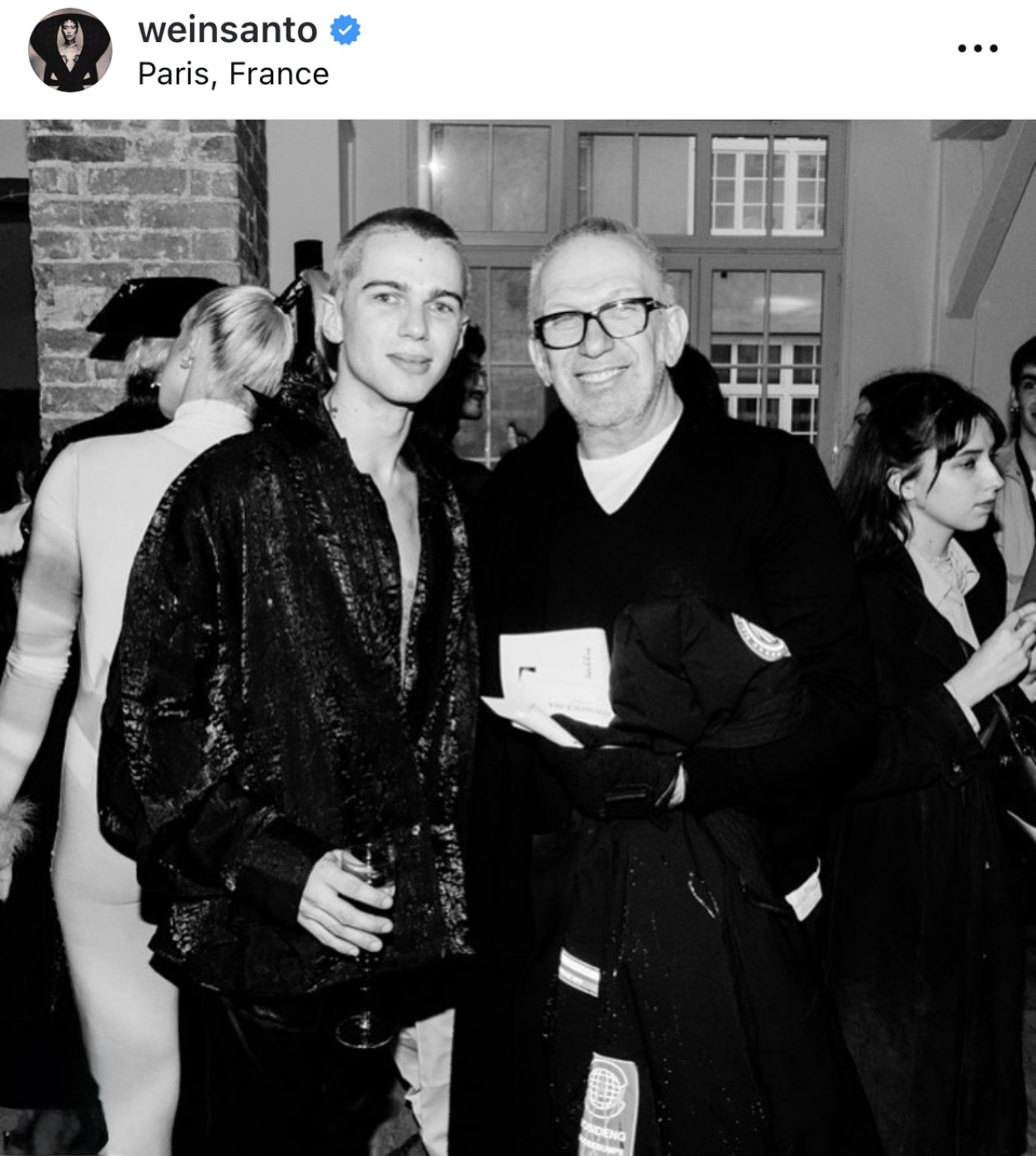
Why did you decide to launch your own label?
I knew Monsieur Gaultier’s time at the house was coming to an end, and I couldn’t imagine staying on without him. I also wasn’t certain my contract would be renewed, so I chose to leave on my own terms, with dignity. For the final summer show, we worked around the clock, and on top of that, I was developing my own collection in the evenings. I didn’t want to risk being out of work for long. My goal was to have a collection ready to show immediately after leaving Gaultier, so I could quickly find a position elsewhere. My student projects no longer reflected the level I wanted to present, so I threw myself into the work completely. The plan was clear: I finished at Gaultier at the end of January, and by the beginning of March, I had organised my first show, which Jean-Paul himself attended. A week later, lockdown began in France, and suddenly all my job searches came to a halt. That’s when Adrien Joffe entered the picture, thanks to my best friend Romain, who introduced him to me and brought him to my first show. Adrien immediately understood the situation and kindly offered, “If I can help you sell, that would be great.” He then invited me to show the collection at the new Dover Street Market showroom on Place Vendôme. It was an extraordinary stroke of luck: we sold immediately, and in major stores around the world. That’s truly what launched everything.
You create Haute Couture pieces, but you show during regular prêt-à-porter shows in Paris, why?
For me, couture has always been very specific. If you look at the official criteria set by the Fédération de la Haute Couture et de la Mode, it’s extremely strict; even just being invited as a guest member is already very complicated. The competition in couture is tough. I prefer to stand out in my own way. I love making jeans, belts, things that I actually wear myself, so I don’t want to limit myself. If I committed fully to couture, I wouldn’t be able to explore that.
What I enjoy is offering both: something completely extravagant, like a moulded plaster piece or a spectacular bridal gown, alongside a more commercial wedding dress or a simpler silhouette. That balance excites me. Most of the pieces are produced in factories, so I wouldn’t call that couture. For me, when I use the word “couture,” I mean the big hats, the corseted dresses, the crinolines — all the pieces made here, in my atelier in Paris. Take Claudie, for example, she’s been the head milliner at Gaultier for years, and now, she works with me. I’ve always collaborated with people who have real savoir-faire. For me, building my career has always been about that: working alongside true craftsmanship.
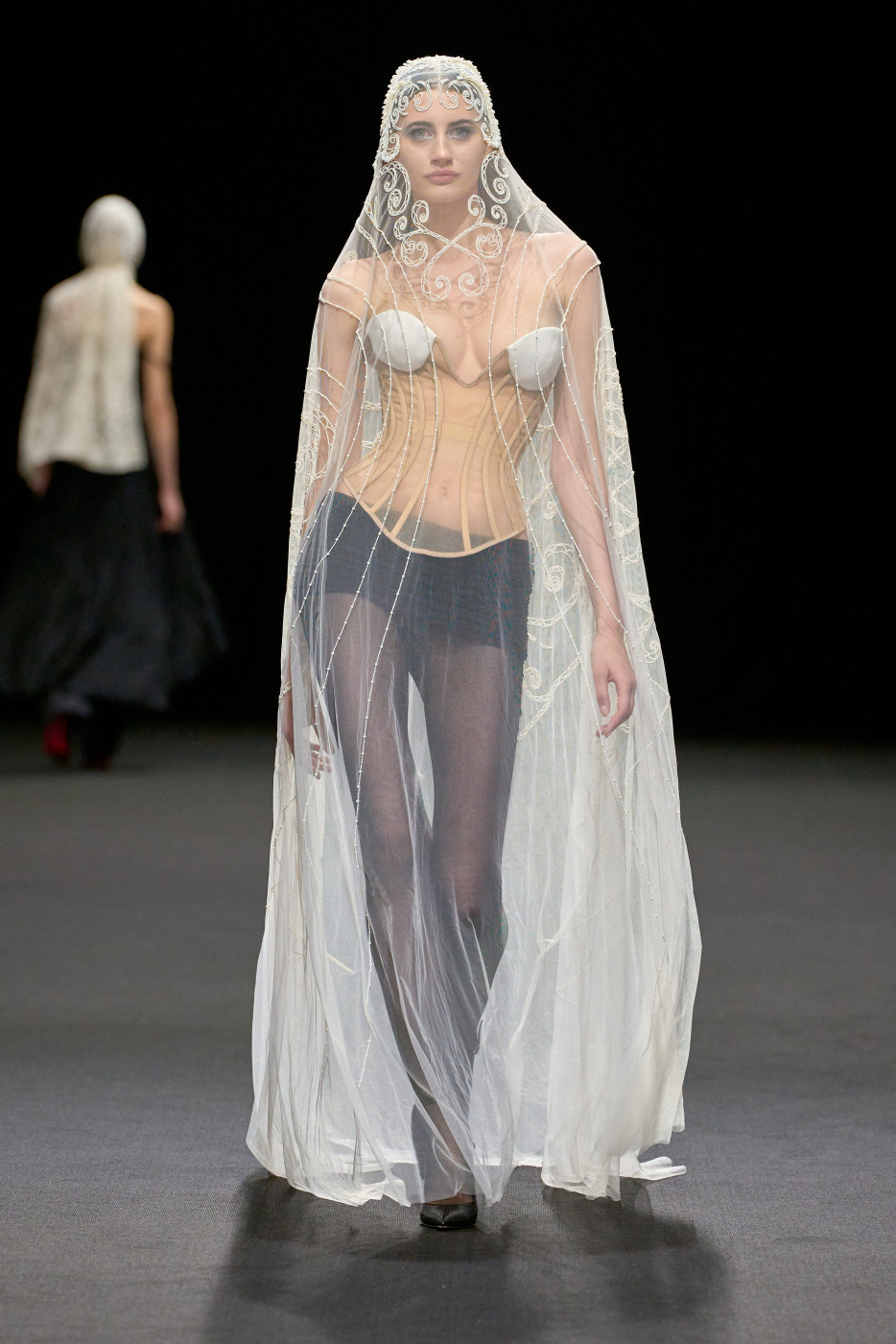
You also show in Dubai, where you are now a regular on the fashion week schedule. Do you remember your first time here? What were your first impressions?
I first experienced Dubai through an exchange with the Fédération de la Haute Couture et de la Mode, as a guest designer. When I arrived, I came without judgment, without any preconceived ideas. I didn’t carry the easy criticisms that people sometimes project. Over time, I really came to know the country and the mentality there, which is far more open-minded than many people imagine. Of course, there are rules and restrictions; for example, public displays of affection are not allowed. But what struck me is that in many ways, I felt even more accepted. I could walk around in a crop top, tank top, or mini-shorts, and if people looked, it was with politeness. In France, I might have been insulted. That made me realise that Dubai can be far more open and accepting than we often think. The local culture, rooted in the Qur’an, often feels to me more open in practice than what we see in many Western countries shaped by Christianity or Catholicism. One of my closest friends (we met through music, and she often walks as a model at my fashion shows) helped me understand this. With her, you quickly become like brother and sister. There’s a strong sense of solidarity. She always says, and it’s true, that if you have a problem there, you call someone and they’ll help immediately. In France, there can still be an undercurrent of jealousy or individualism, not always, of course, but it’s there. I’m not saying one way is better than the other, just that both have their flaws. For me, it really is two different worlds, and I have to say, I love it here.
In which ways are your collections different when you show in Dubai? Do you adapt them to the local standards?
It’s a huge privilege and an honour to show and sell in the Middle East. The audience is genuinely interested, open, and curious. My work is always very sexy, very opulent. I stand out completely, and yet the government validates my collections. Of course, the same collection often requires small adjustments. We avoid shimmering textures, swap panties for shorty briefs, or I’ll rework a look entirely with trousers. I don’t mind, it’s important for me to respect the culture. And as they often remind me, they are more open-minded than people think. During fittings in Dubai, it has happened more than once that a government representative was present to approve the looks, sometimes saying, “No, this one is too sexy.” I never take it personally. I actually see it as a positive exercise, because it forces me to present my work in another way: often more commercial, more wearable, more accessible. In the end, it broadens my approach. Now we’re participating in showrooms there, with major department stores across the Middle East. At my own small level, I’ve never felt as useful as when I feel I’m contributing to opening minds through fashion, bringing a lighter sense of freedom. Take Jacob Abrien, for instance, who co-founded Fashion Week in Dubai with Mohammed Aqra. He’s a genius, deeply open-minded, and it’s his daily mission to push boundaries. And he’s succeeding. Ten years ago, none of this existed. You couldn’t have put a woman in a Weinsanto gown on a Dubai runway; it would have been impossible. Today, it’s happening.
Last year, your designs were featured in the Opening ceremony of the Olympic Games. How did it go?
It was an incredible opportunity. I feel eternal gratitude to Daphné Bürki and Thomas Jolly for thinking of us, for believing in us. It was a huge chance and gave us extraordinary visibility. For example, my grandmother doesn’t really understand much about fashion, but when she saw me credited during the Olympic ceremony (Weinsanto is her maiden name), that was one of my proudest moments. It meant everything to her, and to me. For many of us designers, it even led to being named Chevaliers of the Order of Arts and Letters. I never would have imagined such a thing in my life; I wouldn’t even have had the ego to ask myself if I deserved it. And yet, there it was. In the end, it may sound simple, but for my family, it had real meaning. And yes, the Olympics were without doubt one of the greatest experiences of my life. Plus, we celebrated properly afterwards on the boat, we laughed so much!
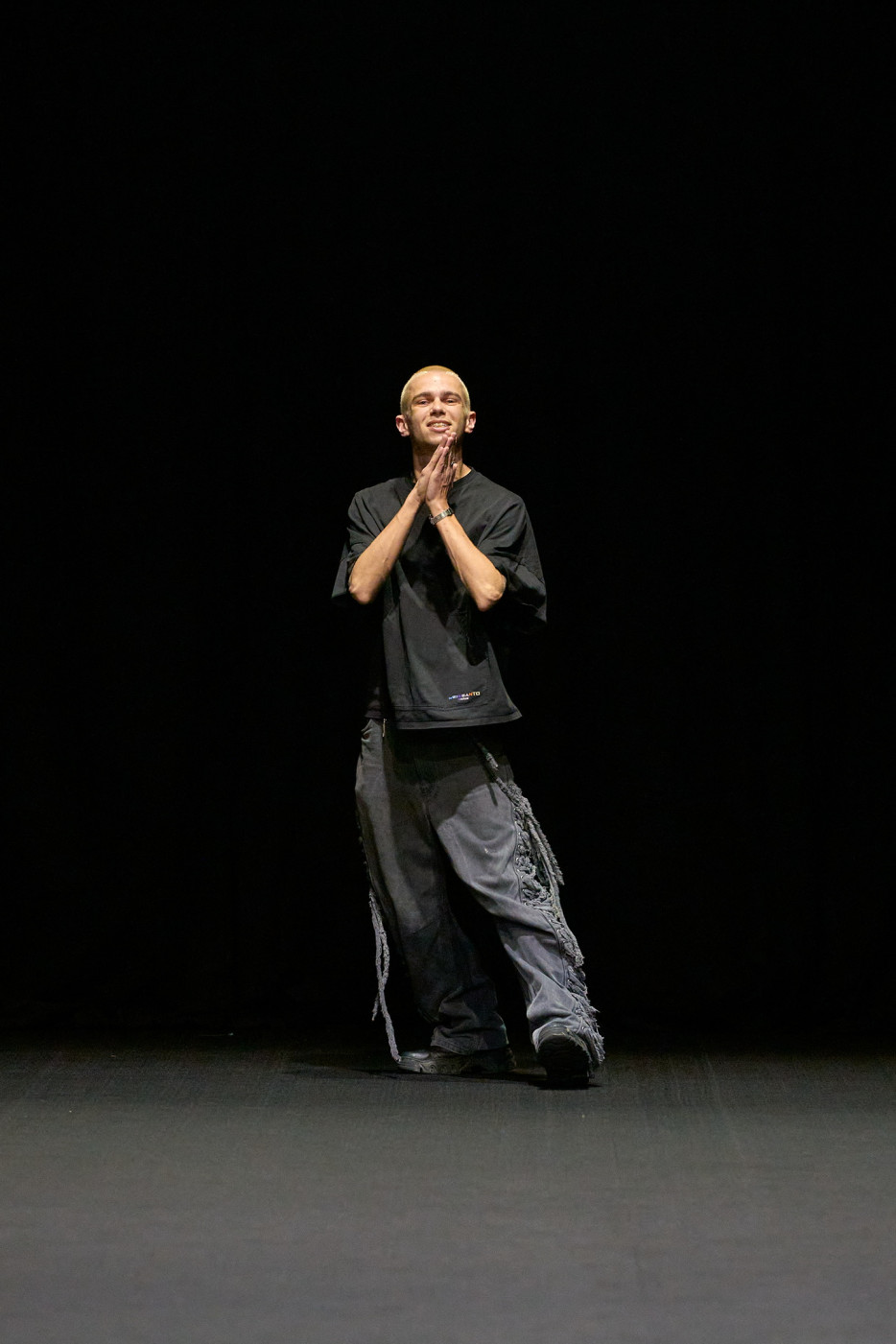
Text: Lidia Ageeva


